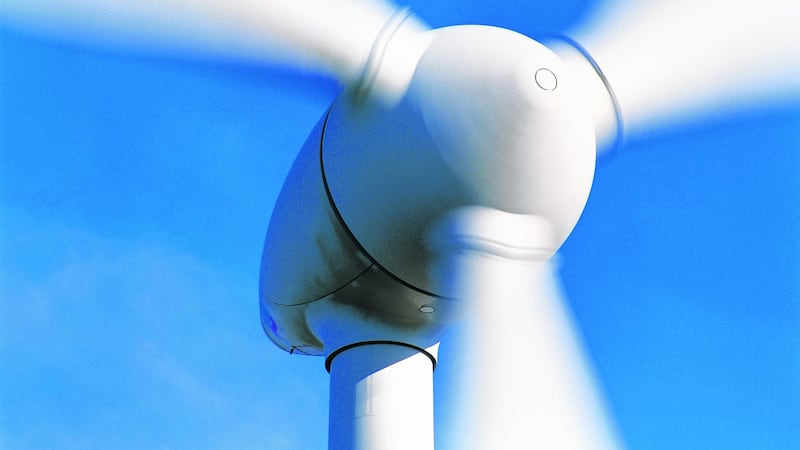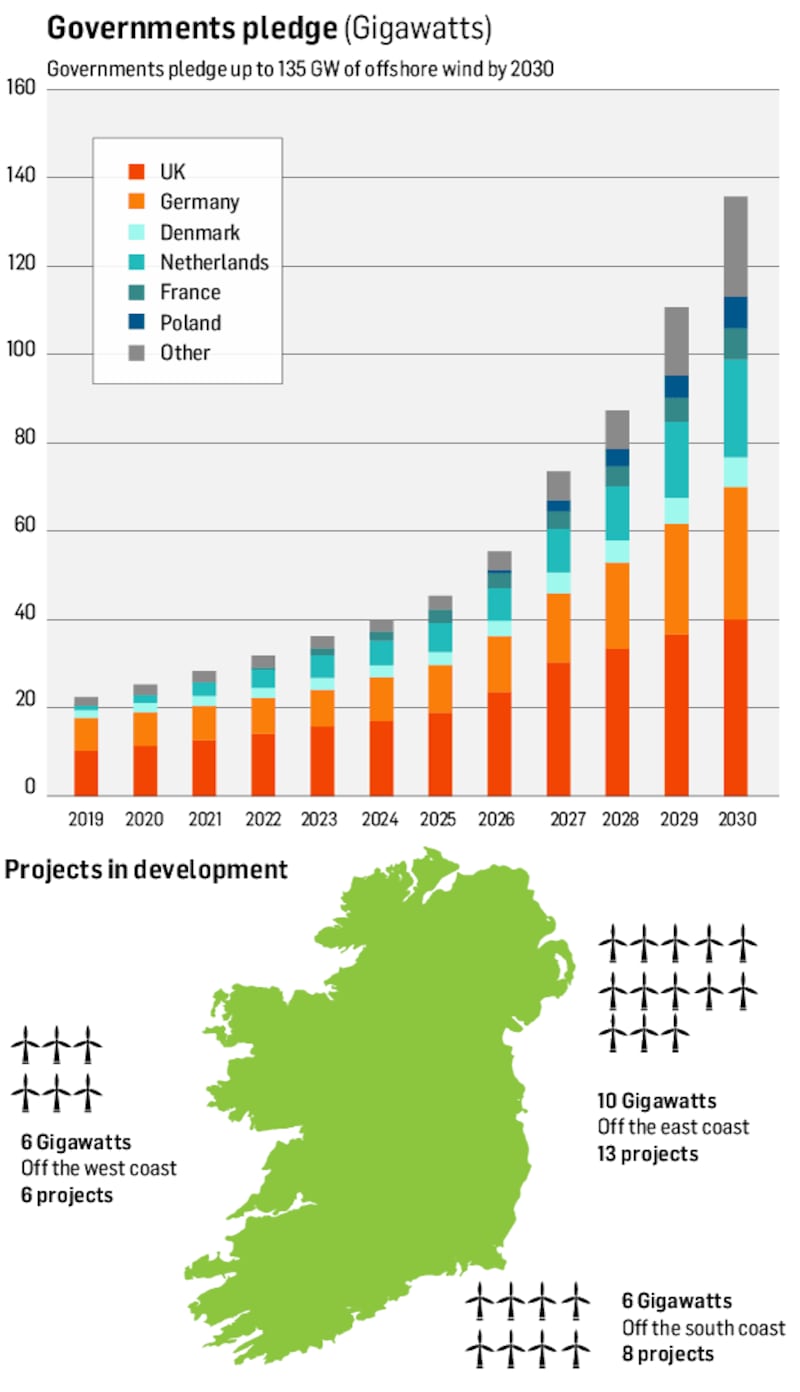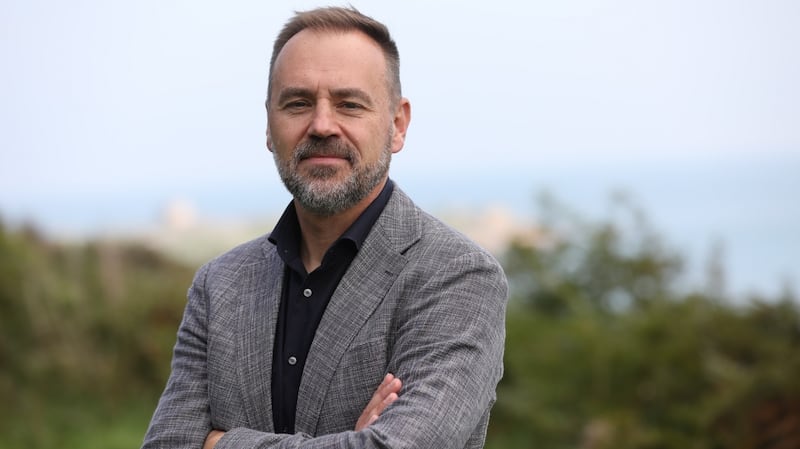The potential for Ireland to become a superpower in offshore wind energy cannot be disputed, though the route to getting there is less clear.
With a maritime area seven times larger than our landmass, most of which is in the windy Atlantic, we are uniquely placed to muscle in on a sector that, in light of the Ukraine war, is a big bet for Europe in weaning off Russian oil and gas.
Bold Irish ambition is evident, but there are indications a key Government target to have capacity to generate 5 gigawatts (GW) of power from offshore wind by 2030 is in jeopardy.

Planning delays; worries about the electricity grid’s ability to take on vastly-increased loads and to store power; high renewable energy prices in Ireland; and uncertainties on policy and timelines are unnerving investors.
And then there is fierce international competition, notably on our doorstep in the United Kingdom. Yet Ireland could have the ability to generate 10 times its current electricity output from offshore turbines – and to become an energy exporter sending excess electricity to a Europe likely to be connected by a supergrid, or alternatively produce green hydrogen using electrolysis to store power when the wind doesn't blow and convert it to ammonia for transportation overseas.
This prompts talk of what oil did for Saudi Arabia, offshore wind can do for Ireland. Minister for Energy Eamon Ryan described it as "the big prize" to be realised in the 2030s; "Ardnacrusha to the power of 100". Fixed turbines in shallow waters including the Irish Sea and floating turbines off the south and west coasts is the likely mix.
A Global Wind Energy Council report last month put Ireland front and centre among pacemakers for offshore renewable energy over the next decade and beyond. The Oireachtas Environment and Climate Committee was told recently that while Ireland plans to be generating 30GW in the 2030s, the true potential is 80GW; "a definitive resource"– not a vague estimate of the size of an oil or gas field.
Ireland could supply a quarter of 300GW planned by Europe. To put it in context, about 500GW currently powers the United States every year – 1GW of offshore wind energy will, over the course of a year, produce as much energy as about 2.3 million barrels of oil.
‘Long and complicated process’
In announcing six major offshore projects with capacity to generate 3GW are to be fast-tracked, Ryan raised the prospect of significant offshore power from 2027.
Under new powers, the first tranche of "relevant projects" will be able to obtain maritime area consents (MACs) from the Minister, enabling them to go directly to An Bord Pleanála for consideration, provided they meet planning, environmental and financial requirements. A new agency, the Maritime Area Regulatory Authority, takes over responsibility for this in 2023.
To survey a potential site, a foreshore licence is needed, while a MAC – a seabed lease – has to be submitted with an environmental impact assessment in a planning application.
With so many variables including environmental impact assessments, a 50 per cent attrition rate for projects is likely, developers claim
Wind and solar farms are industrial-scale projects and must be carefully planned, permitted and controlled to avoid negative impacts on people, wildlife and surroundings, explains energy analyst Dr Paul Deane of MaREI energy institute in University College Cork. "Planning for energy projects is a long and complicated process with reports typically running to thousands of pages. From conception to planning and construction can take five to eight years, meaning projects needed for 2030 must be planned for today."

Current realities are undermining optimism even with that time frame. Wind Energy Ireland says it is taking 24 months to get a foreshore licence. Getting planning permission and facing a possible judicial review could take another 24 months. This means the chances of any project being connected by 2030 "are extremely slim", its chief executive Noel Cunniffe says.
With so many variables including environmental impact assessments, a 50 per cent attrition rate for projects is likely, developers claim. The UK promises a foreshore licence within 24 weeks.
Pressing issue
Fast-tracking six projects is a positive step, Cunniffe accepts, but many more are needed including follow-through so first-phase projects can compete in the first offshore renewable energy support scheme later this year, and planning can be sought in early 2023.
The most pressing issue is the resourcing and capability of the planning system to manage the scale of projects involved, he adds. The public has to have confidence in An Bord Pleanála, that it is sufficiently resourced. “Right now, we don’t believe they have the skills and resources to make that a reality.”
First-tranche projects (the six) will soon be followed by another 10; all of which will need to be processed quickly. Yet, “there is not enough inspectors with the right level of maritime experience”.
The second big problem is slowness in reinforcing the grid so it can accommodate the scale of wind power envisaged. Many measures are needed backed by political and public support for EirGrid. It has published its plan, but Cunniffe says it only gets to 70 per cent renewables on the grid.
Further reinforcement measures are needed to reach the 2030 target of 80 per cent, and to comply with carbon budgets. That means being able to cater for expanded onshore wind up to 2028 and offshore projects after that with “support technologies on demand response” to balance supply and secure the system.
A spokesman for An Bord Pleanála says the planning authority was in the process of adding resources and expertise in anticipation of applications for offshore wind projects. It was consulting the Department of Housing, Local Government and Heritage, and central Government on resourcing in relation to offshore planning, and had recently advertised for specialist consultants including ecologists and hydrogeology specialists.
It was not expecting a substantial formal caseload for sometime, however, as other stages had to be followed before applications from offshore developers would be submitted, but there would be some engagement with developers before formal cases were lodged.
‘Too long’
Government plans to scale up offshore wind energy to help the State wean off fossil fuels and achieve energy security are being undermined by persisting uncertainties over the route to market, according to renewable energy developers. "The planning process is simply taking too long" and is a growing risk to the Government's ambitious 2030 targets, says Arno Verbeek, project director of the large Codling Bank windfarm proposed for off the Wicklow coast.
“With every long delay, contractors are starting to lose interest in Ireland,” he told The Irish Times.
Offshore renewables were becoming a truly global market, so developers were “looking at markets that move quickest”, he says. He believed Ireland was not among the top five in that regard.

While he welcomed moves to fast-track six projects, there was still need to provide clarity and commitment while delivering prompt maritime area consents.
The first tranche of projects, including Codling Bank with capacity to generate up to 1.5GW, were all aligned for building an offshore windfarm within two to three years, “but it’s taking seven years to get to that point” – at a time of a climate and energy emergency, he noted.
Having supervised the development of Arklow Bank, Ireland's only offshore windfarm 20 years ago, Verbeek underlined he was in the Irish market for the long haul, though uncertainties were "testing the patience of shareholders".
With large projects such as Codling Bank, meetings with EirGrid and ESB Networks were important to get clarity on timelines, he says. While they were developing what was in effect the largest Irish power station ever built, "EirGrid simply doesn't have people to meet us."
An EirGrid spokeswoman says the company works closely with industry and customers, and speaks to customers on a regular basis. “We also meet with customers when their project plans have reached a point where our input and support will be useful to advance the plans. We are happy to advise customers of what kind of support we can provide and when it would be most helpful to them to convene such meetings.”
Ireland is on course to harness enough offshore wind energy to power 3.75 million homes by 2030, and the 5GW target "is realistic", EirGrid's chief executive Mark Foley has said.
‘Leap of faith’
Offshore turbines will have unprecedented efficiency and be well able for the hostile Atlantic. Conditions off Scotland are similar and the technology is proven there, Cunniffe confirmed. "There is no doubt about the robustness of modern turbines."
From 2025, they will range from 200-250m (656-820ft) in height with potential to generate 15 megawatts per turbine.
Scotland is ahead of Ireland because it jumped at the offshore opportunity – as did the UK with clear ambitions for the next decade. Though it has 11GW of capacity, Scotland has leased more than 25GW, sending out the right signals, giving certainty and investment is flowing.
Ireland can play a key role in securing the EU's strategic autonomy, but it is not geared up sufficiently
“The worst thing we could do is invest in supply chain and ports through a stop-start approach,” Cunniffe warns. He suggests Ireland should take a leap of faith: “Commit to a zero-carbon electricity system by 2035 and set 2030 and 2040 targets really soon. It’s not too late, we have 20GW of offshore in development and a further 10GW of onshore; it’s just about supporting policies.”
Meanwhile, he notes investors have to carry the risk the decision might not go their way, which means higher costs to cover that risk. Added to this, lack of grid infrastructure investment hikes the cost of Irish renewable electricity.
Order books
Large turbine manufacturers and supply chain operators, including big ships needed to operate offshore, have their order books open for 2028/2029 – so if Ireland wanted to build a wind farm in 2025, it’s already impossible.
Ireland, however, can catch up quickly as Europe is only at the initial stage of gearing up fabrication capacity and supply chains for floating offshore.
Belfast is the only port on the island of Ireland capable of constructing an offshore floating or fixed windfarm. Cork Harbour and the Shannon estuary look best set to provide deep-sea facilities, but many ports will need redevelopment to service operational windfarms.
Shannon Foynes Port Company chief executive Pat Keating has said the "development of an offshore renewable energy assembly facility at a new Foynes deepwater terminal will cost an estimated €350 million and will be completed by 2028. It will allow the deployment of floating wind projects by the end of this decade."
ESB ambitions for “a global renewable energy hub” at Moneypoint would mean two large-scale facilities operating in the Shannon estuary by 2030. It is developing 3.5GW of offshore wind around Ireland. But investors looking at Ireland need a signal from the Government that it supports floating platforms, Keating underlined at the Oireachtas committee meeting last month.
“We can learn a lot from how the UK has approached this,” he said, though Ireland is at least five or six years behind. Companies now making a “once in a 25-year investment decision” are choosing places like Scotland. Those investments are funding the establishment of a supply chain outside of Ireland, which raises the danger that “what we end up with is a commodity resource, rather than a value-add resource”.
The readiness of Irish ports for equipment delivery and assembly on- and offshore must be further enabled, supported and locked into future support schemes, says Cork Chamber chief executive Conor Healy. "Cork and Ireland can be a de facto-floating offshore wind and hydrogen hub for the Irish and Celtic Sea, but without clear strategy and focus, the opportunity could easily be missed. Alongside a hydrogen strategy, a ports and infrastructure strategy must be actively pursued."
Switch
Ryan says offshore rollout “is the real opportunity for our country to switch away from fossil fuels and put it up to Putin, saying ‘We’re not going to use your gas in the future’.” Increasingly, electricity prices will be set by renewables rather than oil and gas; “the more we build, the cheaper this becomes”.
Separately, “increasing electricity prices make energy independence in the EU and Ireland even more critical”, Cunniffe believes. Wind energy provided 53 per cent of Ireland’s electricity in February – the highest ever in a single month. On the windiest days, the wholesale price of electricity fell by three-quarters, while on the least windy days it rose by 76 per cent. Wind currently provides 86 per cent of Irish renewable electricity.
"Strategic autonomy" can be achieved in Europe through energy security, according to former head of the Defence Forces Vice-Admiral Mark Mellett, and this offers an extraordinary opportunity to Ireland in providing offshore renewables. He hopes "the necessary capabilities and institutional arrangements are progressed to allow the EU to attain the strategic autonomy necessary to prevent such arrogant opportunism by the Russian Federation".
For Ireland, urgency must go beyond seizing opportunity; we remain the most energy-insecure country in Europe
With sovereign rights and seabed resources extending over an area almost one million square kilometres, Ireland can play a key role in securing the EU’s strategic autonomy, but it is not geared up sufficiently. He hastens to add no country is sufficiently ready to deliver the renewables required.
“Nowhere is geared up. Demand outstrips the industry,” he adds. Even the 5GW planned for 2030 in Irish waters will probably go unmet as readiness is short of what is needed. But that is not a reason to wave the white flag, he underlines. “The requirement versus capacity issue is a global issue,” Mellett says.
Advantages
Ireland has two key advantages; its vast maritime area and the quantity of wind resource. It is best situated in the EU 27 context, he adds, as indicated from the potential from the Porcupine Bank alone, a flat 40,000sq km area, 200m (656ft) deep some 200km off the west coast. This is where floating wind turbines will be located but not until the 2030s, Mellett predicts.
That 5GW target for offshore by 2030 should be seen as a minimum threshold target, Healy says. The Celtic Sea alone has potential for 50GW of offshore wind – the UK is set for 40GW by 2030, Germany for 40GW by 2040 and France for 40GW by 2050, with Belgium, Portugal, the Netherlands and Denmark already scaling up. Germany has flagged it will need vast volumes of imported hydrogen. Recognising the honeypot that is Irish waters, states and developers are queuing up to offer solutions, know-how and partnerships.
Ireland has set some of the most ambitious global climate and renewables targets but if not delivered on, “damage will not only be environmental but reputational”, Healy believes.
The Maritime Area Regulatory Authority from day one will need “capability and capacity” to ensure it rapidly facilitates applications to develop renewable assets while ensuring robust compliance and enforcement. Government departments, State agencies and local authorities are being challenged like never before, but “in a climate and energy security crisis it is essential that there is no weak link that inhibits the pace of development. We cannot afford for projects to get caught up in an under resourced system”.
The sudden exit of the global player Equinor from Ireland last year "cannot be repeated", Healy adds.
Russia’s invasion of Ukraine is accelerating an energy transition in Europe and putting energy security, including scale-up of offshore wind, at the top of strategic political priorities. For Ireland, urgency must go beyond seizing opportunity; we remain the most energy-insecure country in Europe: 85 per cent of the State’s energy comes from fossil fuels and the energy crisis is going to be with us for much of the next decade.







